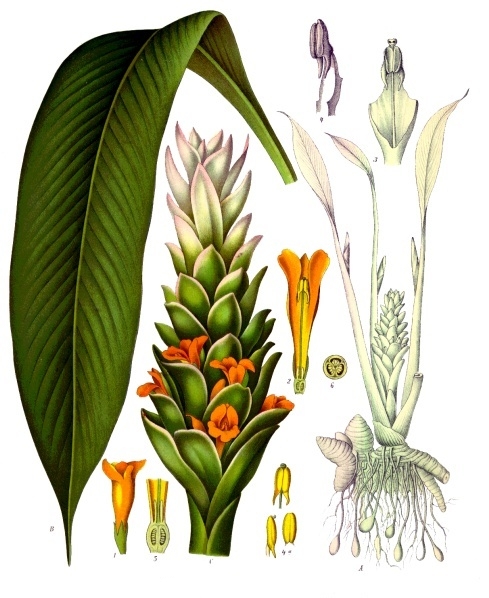- HubPages»
- Health»
- Alternative & Natural Medicine»
- Herbal Remedies
The Medicinal Properties of Turmeric
Colorant and Condiment
Turmeric is a food colorant and condiment. Turmeric belongs to the same family as the pungent ginger. Turmeric is also known as curcuma, Indian saffron, or yellow ginger. Turmeric is grown in tropical and subtropical areas such as China, Indonesia, India, Jamaica, Haiti, Philippines and Peru.
Aromatic Odor and Fiery Taste
Turmeric tuberous rhizomes are usually boiled, cleaned, dried and polished for commercial use. The type of turmeric that is commonly used is hard, dull, and waxy with color shades that vary from yellowish to orange-brown. When polished and ground, turmeric will produce a bright yellow powder with aromatic odor and fiery taste. Turmeric will normally mature in about 9 months after planting and is a perennial herb. Turmeric rhizomes are ready for harvesting when the leaves become yellow.
Turmeric

Turmeric in Treating Ailments
Turmeric has medicinal properties and it is used by the Chinese herbalists in treating chest pains, sores, hemorrhages and toothaches. Turmeric is also used in treating ailments associated with respiratory and digestive systems.
Curing and Storage
If the turmeric rhizomes are not sold immediately after harvesting, they will need curing or storage. Rhizomes or the finger sets are usually cured by splitting lengthwise into three or four pieces. The pieces are then put in containers and covered with water. The surfaces are covered with dry turmeric leaves. The rhizomes are then boiled for about three hours and then cooled. After cooling, they are dried in the sun for seven days. After this, the rhizomes are polished by rubbing them.
Curcumin is a Mordant
Turmeric contains gum, starch, mineral matter, cellulose, oil and curcumin. Curcumin is a mordant – a substance that is used for dying fabrics. When used as a dye, curcumin, curcumin reacts chemically and form an insoluble substance which is firmly attached to the fabric.
Anti-Inflammatory and Anti-Arthritic
Curcuma oil is known to have anti-inflammatory and anti-arthritic properties. Curcuma oil is anti-endemic, anti-bacterial and has anti-insecticidal properties on insects especially houseflies.
Medicinal Properties
Turmeric has medicinal properties and it is used by the Chinese herbalists in treating chest pains, sores, hemorrhages and toothaches. Turmeric is also used in treating ailments associated with respiratory and digestive systems.
A Culinary Ingredient
Turmeric is a culinary ingredient and is used in making curry powder. Turmeric together with its oleoresin is used to flavor and color food products including meat products, egg dishes, pickles, soups and gravies.
Unlimited Possibilities
With all these properties, and considering the changing food attitudes among the people, turmeric has unlimited possibilities as a spice in creating new, better foodstuffs tailored to the needs of the next generation.
If you have liked this article, and you would want this page to keep up and improved, you can help by purchasing some great items from Amazon by following Amazon links and widgets on this page, if you will. A free way to help would be to link back to this webpage from your web page, blog, or discussion forums.
The Author’s page is designed to help beginners and average readers make some money as an extra income to supplement what they may be earning elsewhere - details of which you can find in My Page.








